|
by Karen Lynn Ingalls What — you mean it's already 2024??? Just where have the last few years gone? They’ve REALLY flown by…. I hope you’ve had a happy and healthy holiday season (and it’s not over yet!). And I hope that this next year brings you plenty of creative joy, in whatever direction your art is taking you. And you might think about just doing something for fun… for relaxation… for joy — especially if it’s stormy outside…. I’ve been creating abstract pieces lately — beginning with some demonstration pieces (that I then turn into demo videos) for my Acrylic Painting 101 class. And then I got a commission to create a painting similar to a smaller demo piece that my clients happened to spot in my studio. Three nice things about abstract painting (of course, there are more too):
The last one shown is its finished stage, incorporating acrylic texture medium (pumice), tissue paper, relief printing, and paper towels with lots of paint on them. 😊 Here’s a little closeup showing the texture medium, and paper towels, and a little hint of several of the spots where paper towels are incorporated, though it may be hard to detect. Notice: those painty paper towels you use to wipe off your brushes make great potential collage elements.... You might want to think twice before throwing them away!
So… do you feel like giving yourself permission to try something different, just for the heck of it (and the fun of it)? It could be a refreshing way to begin the New Year! Here's to a truly Happy, Healthy, Peaceful, and Creative New Year! #karenlynningalls #abstract #abstractart #abstractpainting #paintinginprogress #paintinginprocess
0 Comments
by Karen Lynn Ingalls Well, summer is truly here, it seems! And perhaps we won't have the amazing clouds we've had in recent weeks and months for a little while again… but we sure did have some gorgeous sunsets then, didn’t we? Sunsets do come up periodically as an inspirational, beautiful, and much-beloved subject to paint. And you may have gotten some great photos to work from in these last few weeks and months — that’s what we’ll be looking at in class this week. There are all kinds of different approaches you can take — mostly about light and shadow, colors and their intensity or subtlety, and soft and hard edges. You can take what we would now consider a more traditional approach, like Albert Bierstadt (who was definitely pushing new boundaries in his time)… Or something more modernist and abstract, like the work of Gabriele Munter (note the harder edges of her clouds here!)... We can take our paintings in any direction we like! It’s up to us, and the directions WE feel inspired to take. ❤️ Here's a direction I felt inspired to take in this painting of a sunset over Mt. St. Helena, using lots of texture. This is a 2.5 minute, VERY time-lapsed video of its creation, which I also posted on Facebook last week. So… have you been inspired by those amazing sunsets we’ve had in recent months? Have you done any sunset painting? It definitely can be fun — and remember, YOU are not a camera. What you see is only the beginning of where you can take it….
by Karen Lynn Ingalls Some years back, as I was setting up for the Open Studios show we used to do in Yountville, a friend popped around the corner, took in the oranges and blues of one painting in particular (where the blues were a little purple-ish) for just a second or two, and exclaimed, “Poppies and lupine!” — though it was a vineyard scene. 🙂 It occurred to me that one of my favorite places when I was a child was the half-acre meadow next-door to our house, where we lived till I was seven. A golden palomino named April lived there, and I called it “April’s Field.” Each spring it was filled with beautiful California poppies and blue lupine. (Appropriately named, wasn’t it?) I loved taking it in, climbing in between the strands of barbed wire, walking into the middle of it, and feeling surrounded by flowers! But it had never occurred to me before that it might have influenced the colors that I eventually evolved into loving perhaps the most… and which really came to life after I’d moved back up to northern California, and was once again surrounded by the colors I’d loved so much growing up. (You may guess, seeing poppies and lupine always makes me smile.) Perhaps that's why, when I was working on my "Beauty from Ashes" series after the Northern California wildfires, and feeling the need to rise from the ashes, I could see patterns of poppies in fields, in closeup photographs I'd taken of the melted corrugated metal of my barn studio's roof. I finally painted some small pieces of poppies, as demonstrations of different approaches to abstract landscape and rhythm-and-pattern paintings, a couple of years ago (no lupine, though! Not yet, anyway). Have you considered where your painting influences come from? Perhaps they come from artists you’ve admired for years… or the environment around you… or perhaps new discoveries during these last couple of years? Or perhaps they may have come from the first few years of your childhood, along with the wonder and delight they originally evoked, that tucked themselves into your subconscious, and pop up into the artwork you make today.... You never know... it's possible! #californiapoppies #poppypaintings
#californialandscapepainting #paintinginspiration Art Humor... a funny story about art in a museum, critics, an art student, & a bottle of Coca-Cola3/14/2023 by Karen Lynn Inglls California has been deluged with rains and storms this winter, with one atmospheric river after another. If you're in California as you're reading this, I hope this finds you safe, warm and dry. (Thank you for helping us recover from drought, Momma Nature, but we’d really like it a little less at a time, if it’s possible. Please?) So, especially for those of us who are safe and just hunkering down through the storms… maybe it’s time for some humor.... Here’s a little humor coming from a source I didn’t expect, combining museum paintings, Coca-Cola, digital art and video with a humorous story about art students drawing from the paintings in front of them. (With a critic looking over their shoulders... that reminds me of this sketch I did from a painting Norman Rockwell created in 1928 for a Saturday Evening Post cover, called “The Critic” or “Hayseed Critic.”) Can you imagine? Uck… nobody needs a critic like that looking over their shoulder, whether an outer or an inner one! But in this short, very creative video — Coca-Cola Masterpiece — the paintings come to the rescue, to save one particular student who’s stuck (and appears to be falling asleep!). Art to the rescue… I love it. 👍❤️ It may be a commercial, and you can definitely get a kick out of it whether you drink soda or not. Here's a link to the video. The first comment identifies all the paintings included in the animation, too. https://www.youtube.com/watch?v=VGa1imApfdg I'm still chuckling.... Addendum: Coca-Cola also has a webpage with more information about all the artists and artwork, and videos interviewing five of the contemporary artists. Here's the link... enjoy! https://www.coca-cola.com/us/en/offerings/masterpiecegallery Addendum #2: The screenshot illustrations are from the video, Coca-Cola Masterpiece, on Coca-Cola's YouTube channel, as you must have already guessed. :-)
by Karen Lynn Ingalls I hope you're having a happy week, and getting as much creative time in as you want! Or do you sometimes find yourself distracted by a multiplicity of possibilities? Maybe it's not sure what kind of media you want to work in, because there are so many things you'd like to try. Or maybe the broad range of subject matter you're thinking about feels a little overwhelming. Or could it be that all of those colors in the paint tubes laid out before you give you so many possibilities you just don't know what to choose? One thing you might consider is how you can simplify things. It's so easy to get distracted by shiny objects, and sometimes, when it comes to art materials and new colors, we may find ourselves with a confusing array of possibilities. That's not to say don't try stuff! Trying new things and experimentation is what leads to discovery! And discovery may take us in wonderful new directions that we would never have thought of exploring, had we not just given ourselves permission to experiment. As creative people, we are often very comfortable with being all over the place. Hey, that's what creativity is all about! It's seeing how different things can come together in new ways, whether in a visual art form like painting, any other kind of art form, or inventiveness of any kind. But every now and then it's good to simplify, to see what you can do with less. One way of doing that with your art making is to see what you can do with fewer colors. If you've taken my classes, you know how I teach the virtues of a limited palette. But you may want to experiment, just for the heck of it, with even fewer colors. Last Friday, the folks in class decided they wanted to take on a two color challenge. Only two colors, you say, shocked! Yes — the idea is to try a lighter warm color and a cooler dark color, plus white, and see what you can make of it. Your options are restricted, but the simplicity of the palette has gifts for you too. Sometimes, when you are less distracted by the excitement of many colors, you can particularly appreciate values. And learning about values makes a lot of difference in all your painting, whether you continue painting with two colors and white, or expand back out. So… are you finding yourself distracted by a multiplicity of options? Whether you're choosing between many colors, or media, or anything else, consider simplifying, even a little bit. You may be pleasantly surprised at the gifts simplicity has to offer you!
by Karen Lynn Ingalls Have you ever wondered where to look for subject matter inspiration, whether for drawing or painting? Here's a suggestion: look around you. It's easy for us to overlook the simple things around us, and take them for granted. But truthfully, they can give us so much to make art about. And learning to recognize the beauty all around us is a very good thing — because there really is beauty all around us. We just sometimes need to learn to see it! So what might you draw or paint? How about that cup of coffee or tea you enjoy in the morning? Or the cup itself? Or, take a look in the refrigerator, and see what you find. A strawberry? A banana? An unopened wedge of Brie in an interesting package? An onion? A pepper? A pear? Look around the house. Do you have a salt-and-pepper shaker? A pitcher? A book? A stack of books? An alarm clock? A candlestick? A chair? A shoe? A purse? Think of all the things you love in your immediate environment. You don't even have to step outside to find inspiration and subject matter. And if you do want a little more challenge without stepping outside, consider drawing or painting your dog or cat sleeping. In the video above, you can watch me draw my adorable dog Zoe (who's unfortunately no longer with us) as she was sleeping, from a photo I took of her a long time ago. And when you do step outside, I hope you'll take a good look and appreciate the beauty just outside your door, too. Just think, how lucky are we to have cameras in the phones we carry with us? It makes taking a photo for posterity — and future references for drawing and painting — as easy as pie. Oh, pie! Now, there's another potential subject.... 🙂
by Karen Lynn Ingalls Have you ever considered creating your paintings in a series? It can be a really effective way of focusing your learning. It can also be a great way to pull together an art show, either your own or a group show with your friends or fellow students. So, what are some of the possibilities? What kind of series are we talking about? How might you approach it? Here are five ideas for series of paintings you can create. 1. Choose one subject, and explore it in multiple ways (such as a simple still life — one pear, or one apple). 2. Choose one subject, and explore it in the style of a different painter in each painting. 3. Create one composition, and paint each one in the same size, using a different palette in each painting. 4. Choose a theme, and create a series of paintings that fit your theme. Landscapes of Napa Valley? Pears? 2020 — a Year We Will All Remember? Springtime Flowers? My Favorite Dogs? The Most Adorable Cats You've Ever Seen? (We don't want any cats to feel left out or overlooked, right?) Jazz Musicians? Portraits of Costumed Models? You get the idea.... 5. Choose a theme, and create a series of paintings fitting the theme, all in one color palette (it unifies everything, doesn't it?) Then, explore your series! What can each painting teach you as you move through the series? What can you learn from each new painting that you hadn't learned yet? Yes, paintings can be our teachers. And working in a series is a good way to explore, to discover, and to learn and grow as a painter.
by Karen Lynn Ingalls I hope this finds you happy and healthy and getting in some good creative time! I’ve been finding myself thinking a good bit lately about the positive and negative. There’s positive and negative when it comes to attitudes (I’ll take extra helpings of the former, thank you, and don’t have the time or inclination for the latter) — and then there’s positive and negative space, an essential understanding when you make art. In that case, it’s not like one is good and the other is something you want to avoid — it’s more like yin and yang. When it comes to the visual representation of space, each defines the other. Generally, in life, when we think about something in particular, let’s say, a tree (okay, you know I love trees!), we think about the tree. We don’t think about the air around it, the sky, the wind, the bird song wafting from its branches… but all of those are a total part of the experience of the tree. When you put it into a two-dimensional space — such as in a painting — it’s easier to see how it works. So there’s Tree (Positive Space) and Not-Tree (Negative Space). Negative space just means everything that is Not-Tree. And learning about Not-Tree (or Not-Flower, or Not-Bicycle, or Not-Chair, or Not-DogBuddy, or whatever you happen to be looking at) is essential for painting that Tree (or whatever). When you paint, that which is Not-Tree helps define Tree. It takes both to make the painting work.
Who knew something negative could be so helpful? Making art can be mind-bending sometimes, can’t it? 🙂 by Karen Lynn Ingalls I hope this finds your week going well, and that this finds you creatively inspired and coming up with ways to bring much-needed beauty into the world. I just had my first vaccination today, and now, after a little nap, I feel ready to paint again! When you make art or get into pretty much any kind of creative mode, it’s helpful to stay in a playful, experimental state of mind. If you can keep it exploratory, and think of it as a discovery process, you will help keep your inner critic at bay, and perhaps make some new discoveries that could open up wonderful new art-making possibilities. And when you keep it playful, you actually do learn more, because you’re open to it! As you may have noticed, I’ve been painting using a bunch of different styles and methods lately. I get to use teaching as my excuse — because it’s so much more interesting and educational for folks in classes to see different approaches and find the ones they relate to the best, than to only see one (and in time-lapse demonstration videos, it's easy to see the whole process quickly). Last night I finished an 11” x 14” primarily-palette-knife painting — not a method I generally use, unless it’s a demonstration painting. But it is so fun to explore! It's the one you see above — I’m calling it Sunset in the Carneros, at least for now. (No, it’s not fire.) Last summer I painted two other paintings, in different styles with different approaches and different palettes, of the same scene, albeit taken a little further down the road, so the perspective and the composition’s a little bit different…. Each is definitely something completely different…. Have you ever tried that? Taken one subject, and explored painting it in several different ways? One of my painting teachers in college, Maurice Lapp at Santa Rosa Junior College, had his students do that. Then, I did, I think, five different kinds of paintings of an apple. The last one was inspired by Wayne Thiebaud, and decades later I rediscovered it, and realized just how much it foretold much in the work I generally do now (just in a slightly different, but equally limited, palette). If you haven’t tried something like this before, and want a little creative push, or an opportunity to play, you might give it a try. Do you usually draw your composition in? You might try massing in the colors of the big shapes first, and refining them later. Do you usually use a particular kind of brush? You might try using one or two brushes that are very different, or try palette knives (you can get inexpensive sets of plastic ones in different shapes at art supply stores). Or…? Is there anything you’ve seen or thought of lately, that you might enjoy discovering? So… what are you waiting for? 😊
by Karen Lynn Ingalls Happy Spring! While the mustard flowers may be past their prime, the California poppies are still blooming, and things may finally be looking up for the world. Spring affects us all — are you seeing it reflected in your artwork in any way? I’ve been creating demonstration paintings, as I’ve shared, and making my time lapse demonstration videos, of subjects including the California poppies. They felt so timely and appropriate! I still have mustard photos ready for more flower paintings later, and today I was photographing more poppies. But in the last couple of weeks I’ve been creating different kinds of paintings, to exemplify different approaches to abstract landscape painting. It's all for my Abstract Landscape Painting online class, to add to the demonstration paintings I'd already done. More flower paintings will come, just not quite yet, after all! One of the things I love about teaching is that I can be all over the place in my painting, in ways that might be considered inconsistent if I were focused on working on a body of work for a show. It lets me be playful in new ways, because I’m demonstrating things I may not usually do. It allows me to push my boundaries and continually learn and expand my creative practice. And it is important for any creative person to keep learning, keep exploring, keep expanding, keep blossoming (oh, how spring-appropriate!). Have you noticed if spring is affecting your artwork? Is it getting brighter? Lighter? More colorful? Are new subjects calling to you? Are you feeling more playful about it? It’s all good! As more light comes onto our side of the planet, and we head towards warmer weather, you can give yourself permission to take your art wherever your inspiration may lead you. You never know what you may discover…. And, in the meantime, keep blooming!
|
Karen Lynn IngallsI am a working artist in Napa and Sonoma Counties, in northern California. I paint colorist landscapes of rural California, teach art classes, workshops, and private lessons, live in Calistoga, and have my art studio in Santa Rosa, California. Archives
December 2023
Categories
All
|

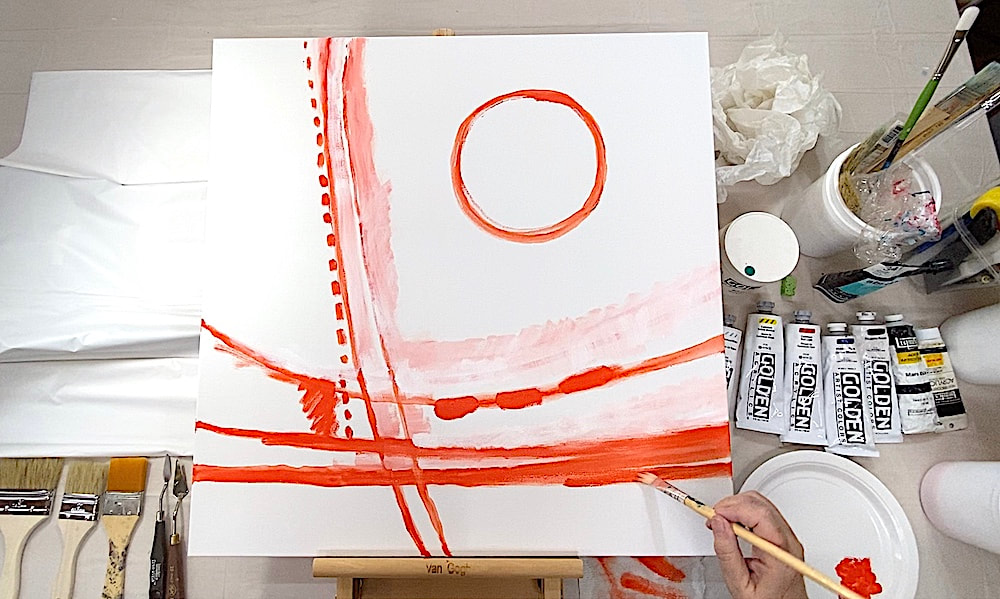



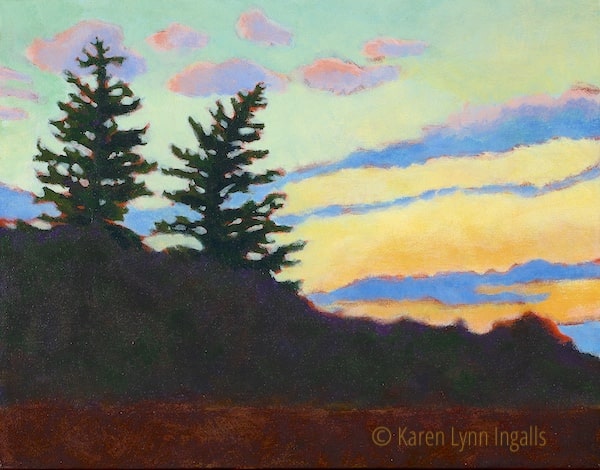

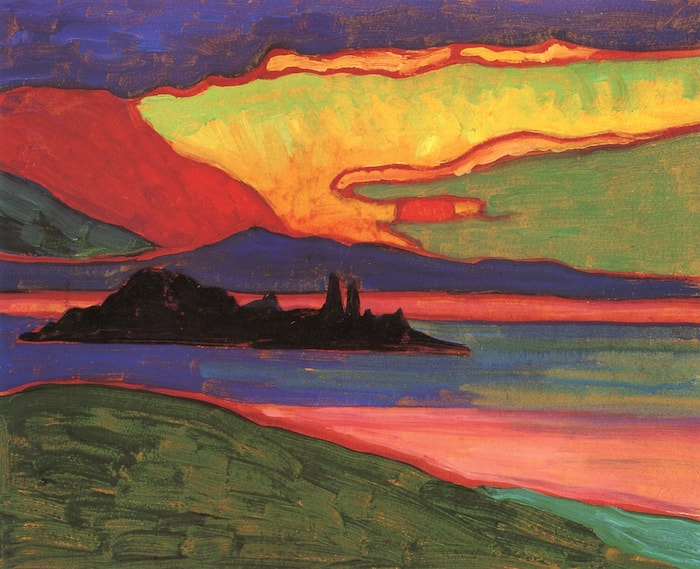


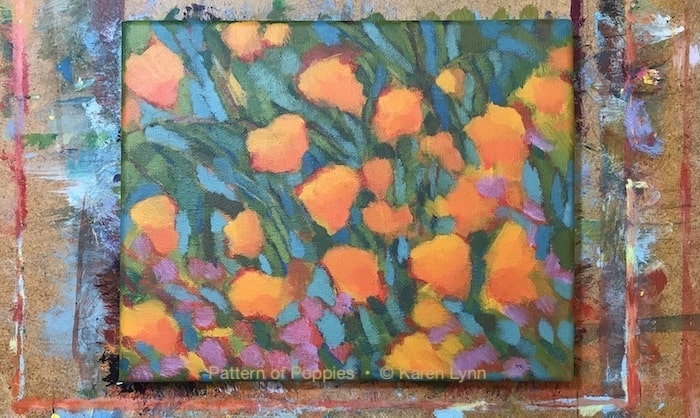

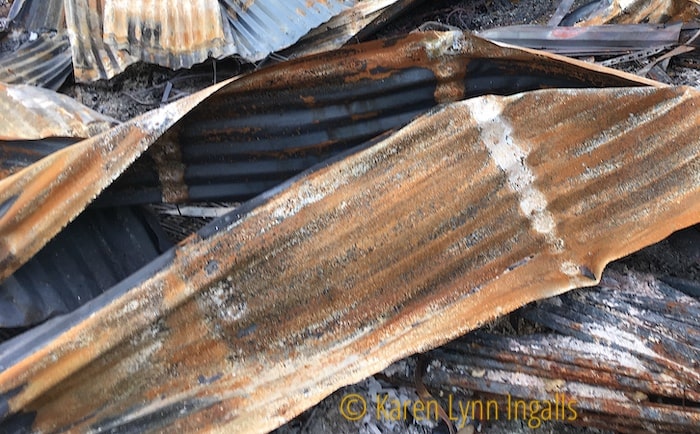



















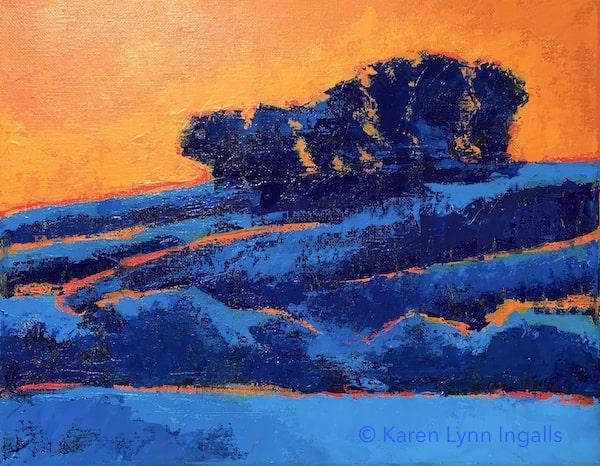






 RSS Feed
RSS Feed

